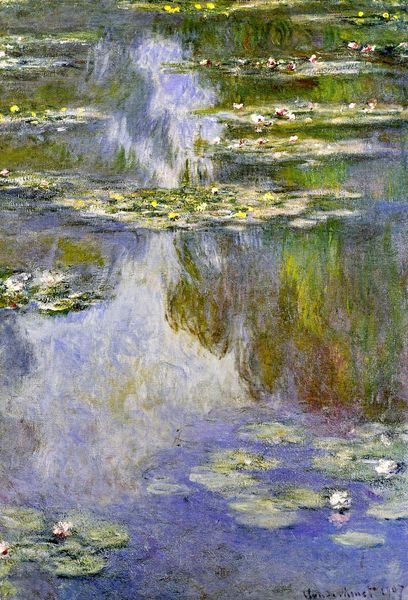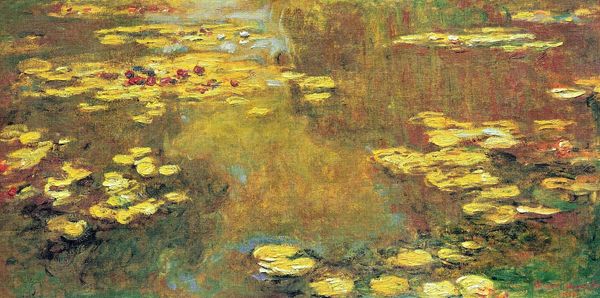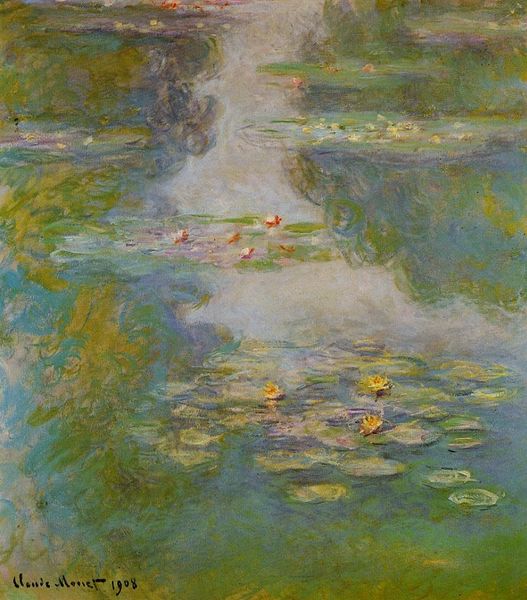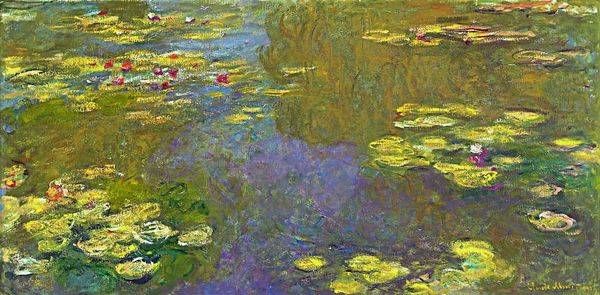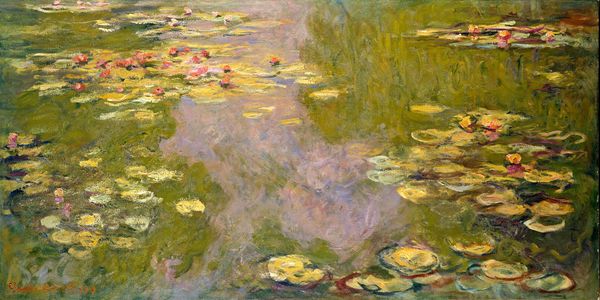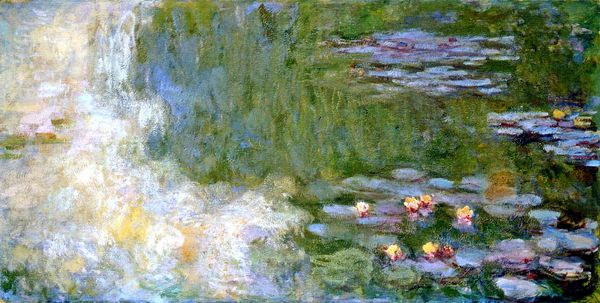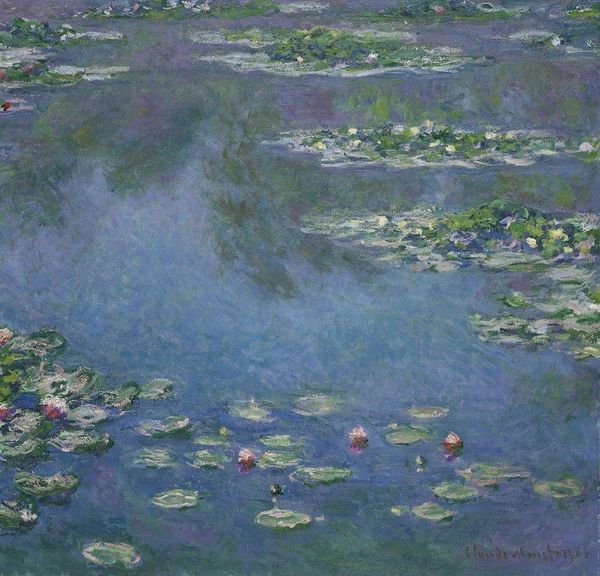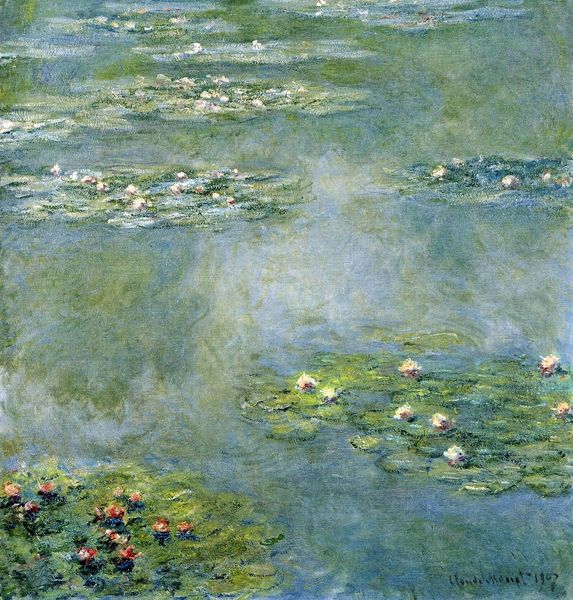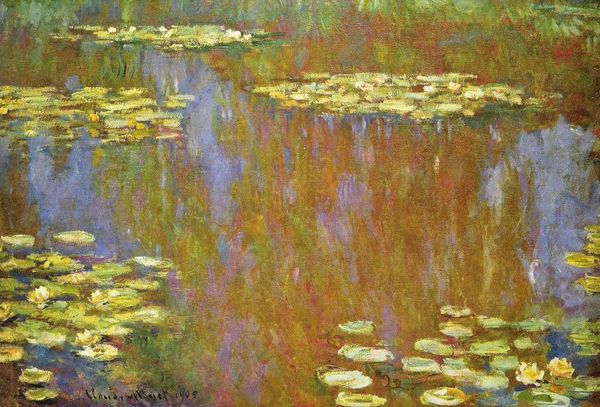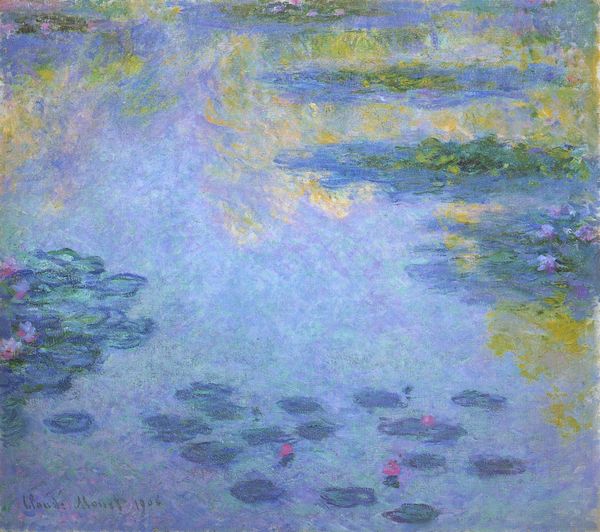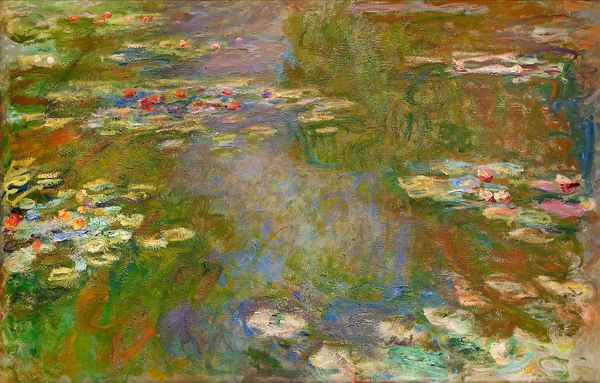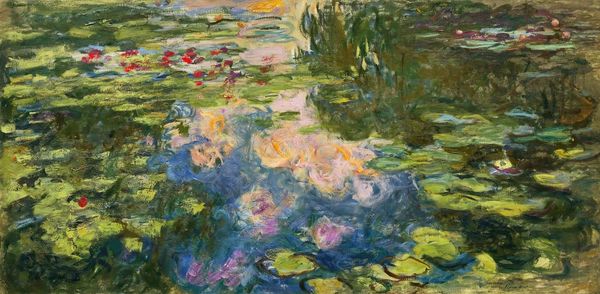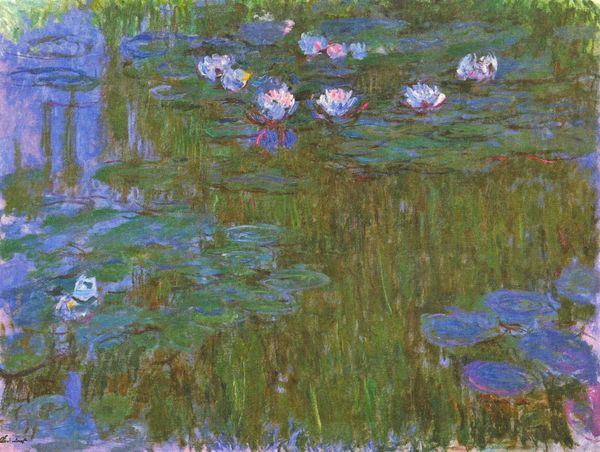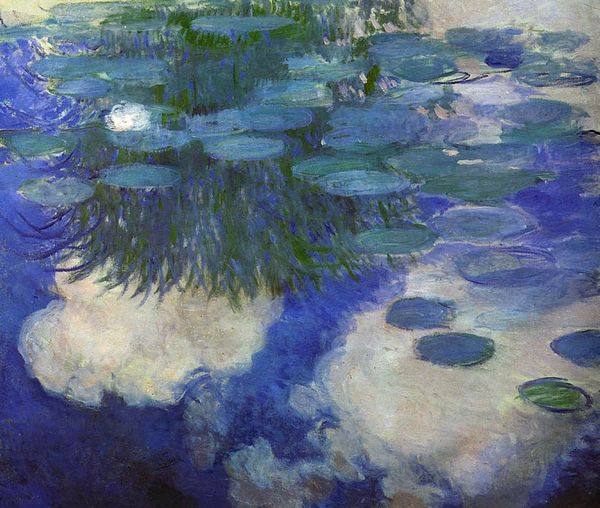
Copyright: Public domain
Editor: This is Claude Monet's "Water Lilies," painted in 1906 using oil paint in the plein-air technique. It evokes a sense of tranquility, yet it's so visually complex. What do you see in this piece from a formalist perspective? Curator: Formally, the painting presents a fascinating interplay between representation and abstraction. Notice how Monet deconstructs the subject - water lilies and their reflections - into a network of brushstrokes. He emphasizes the materiality of the paint itself. Observe how the surface is built up through layers, creating a tactile quality that draws attention to its construction. Editor: So, you're focusing on the technique over the subject? Curator: Not entirely. The subject is crucial, but it is subservient to the formal concerns. Consider the composition; there is no traditional focal point. Instead, the eye is encouraged to wander across the canvas, engaging with the rhythm and texture created by the brushwork and the chromatic relationships. Note, for example, how blues complement yellows. How would you analyze this from the perspective of color theory? Editor: It does feel very balanced in terms of color. So, you’re suggesting the true subject is actually the act of painting itself? Curator: Precisely. Monet explores the essence of visual perception and the translation of that perception onto canvas. The ‘Water Lilies’ becomes an exploration of form and colour. It offers not just a depiction but rather an experience of seeing. Editor: That’s really interesting. I’d been so focused on identifying the lilies. This has changed my perspective completely. Curator: Indeed, sometimes looking beyond representation helps us delve deeper into a work of art.
Comments
No comments
Be the first to comment and join the conversation on the ultimate creative platform.
